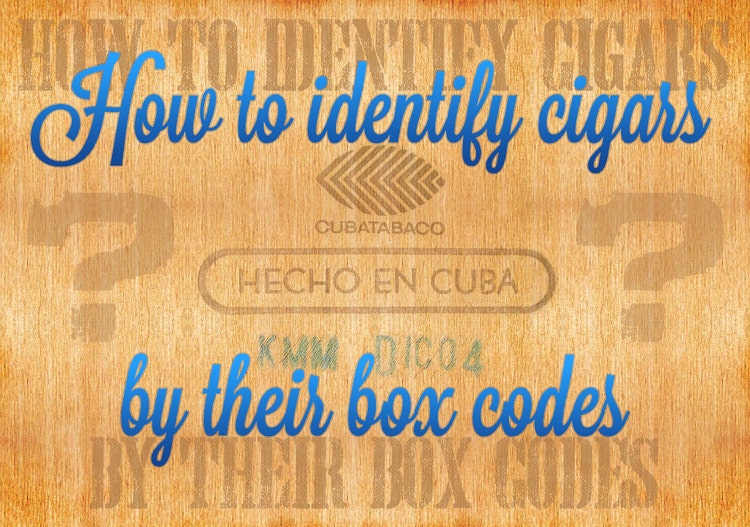
How to identify cigars by their box codes
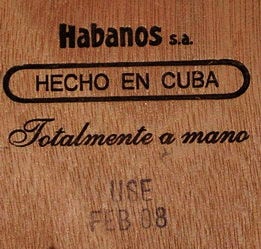
Just when you thought you knew everything about premium cigars, another facet of the cigar industry pops-up, like identifying cigar boxes by their year and factory. So what of it? For one, it’s about making sure you’ve purchased the right box of cigars; secondly, it will refine your cigar expertise; and third, it’s vital information for those who collect vintage cigar boxes.
Factory identification tends to play a bigger role with Cuban cigars because Cuba has altered their factory seals and codes several times over the years. Moreover, unless you’ve really done your homework, trying to identify a vintage box of Havanas can be quite confusing. Since Cubans are still verboten in the U.S., I don’t want to take up too much space on them, but like so many other things pertaining to premium cigars, you have to start in Cuba.
In the beginning…
According to one source, cigars were originally sold in bundles covered with pig bladders, and a vanilla pod would be placed inside the package to stem the odor. These were eventually replaced by large wooden chests that could hold up to as many as 10,000 cigars.
In 1840, English banker, Herman Upmann, opened a branch office in Havana and would ship Cuban cigars back to his London colleagues in boxes made of Spanish cedar due to its ability to prevent cigars from drying-out and extend the aging process. Though it wasn’t until 1844 that Mr. Upmann bought a cigar factory and gave birth to the now famous H. Upmann cigars brand, the cedar box became the standard form of packaging for handmade cigars, and remains so to this day.
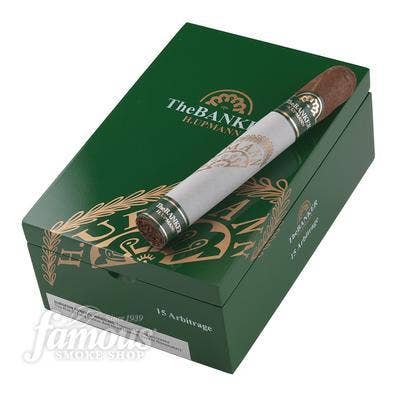
Prior to 1960, all Cuban cigar stamps were also printed in English. After that, the Cuban stamps were changed to Spanish like, “Hecho en Cuba.” It wasn’t until 1985 that Cuban cigars were given specific box codes. Until then their boxes had only one stamp which read “Hecho en Cuba.” The idea to begin using encrypted codes was instituted by Francisco Padrón, then-president of Habanos S.A. The new codes included information about the factory, the month, and year of their release.
In 1989, the inscription “Totalmente a mano” (“totally handmade”) replaced the older inscription “Hecho a mano.” Boxes were also stamped “Cubatabaco,” but in 1994 it was changed to “Habanos S.A.,” and in 2004 the Spanish term “Tripa corta,” was added for cigars made with “short filler.”
The Cuban coding system contained letters and numbers that identified the factory in which a particular box was made, while some parts of the codes were used only for internal purposes. Say a box had defective cigars; the code would tell them what factory it was made. And because tobacco quality changes from year to year, encoding dates were also used to establish when the crop was harvested. The coding system is much too complex to explain in detail here. Suffice it to say, the codes have been changed several times over the years due to counterfeiters who have been able to figure them out.
Thinking outside the box
If you pick up a box of premium cigars and turn it over you’ll usually find a stamp of some kind. It could be an imprinted or branded stamp citing nothing more than the manufacturer’s name and country of origin. However, you may also find a second stamp indicating the date, the section the box was stored at the factory, or even the signature of the box inspector. Today the type and number of stamps vary by manufacturer. In some cases they will place the inspection numbers and inspectors name on a tiny piece of paper inside the box. So, let’s get to the details…
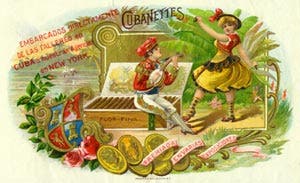
According to the Cigar History Museum website, there are two kinds of information on every cigar box: optional information and information required by law. Optional information could be anything from a company guarantee or slogan, advertising, copyright and registration dates, the type and/or source of tobacco, pictures; even hype, whether it was true or not.
There were really no rules, which opened the door to abuse by some manufacturers. For example, under the lid of the cigar box the label might say, “Tampa’s Finest Cigar!” while the label on the bottom of the box might say they were made in an Ohio cigar factory. But if you checked the cigar maker’s I.D., which was required by law, you might learn that the cigars were really made at a backyard barn factory in Connecticut. So, the only information you could trust on a box of U.S. made cigars was the information mandated by tax law, as follows:
Therefore, if you’re a collector, the only information you’ll be able to verify are the aforementioned requirements. However, because the federal government changed the requirements so often, it actually helps when trying to nail down the date for a specific box of cigars. Following are the years that regulations governing cigar boxes were changed: 1863, 1864, 1865, 1866, 1868, 1869, 1871, 1872, 1873, 1875, 1878, 1879, 1883, 1891, 1895, 1897, 1898, 1901, 1904, 1909, 1910, 1914, 1916, 1917, 1918, 1920, 1926, 1928, 1931, 1932, 1942, 1946, 1959, 1960, 1962, 1964, 1976, and even after that.
Rather than having to memorize all those years, Tony Hyman, cigar historian and curator of The Cigar History Museum, developed an easy way for cigar smokers and collectors to identify vintage cigar boxes. You can find it on cigarhistory.com’s Easy Dating Page!
Show us your brand!
Cigar maker ID’s also played an important role in finding tax evaders. Since they were required by law all a tax inspector had to do was check three vital facts: 1) who was the manufacturer, 2) the location of the factory, and 3) the number of cigars in the box.
During the past two centuries, six different methods have been used for dating cigar boxes as shown in the following timeline:
Type I: Hot branded (1866-1872+) – This information was referred to by the federal government as the “factory brand” because it was required to be hot-branded with iron dies like those used on old crates and barrels. Since only several thousand cigar factories were in operation during the hot brand era, boxes from this period are extremely rare, and branding iron-type boxes even rarer.
Type II: Round with name (1872-1880) – After 1872 boxes could be engraved with a round ID containing the maker’s name in the top part of the circle, the tax district and state in the bottom of the circle, and the number of cigars in the center. This form was used during the 1870’s, making it easy to identify boxes from that decade.
Type III: Round with factory number (1880-1883+) – In 1880 the manufacturer’s name was replaced by a federally assigned factory number placed at the top of the circle. This requirement only lasted several years, when the Type IV I.D. was introduced in 1883. The catch here is that round type III I.D.’s are not reliable for dating because, even though they were not required, they were still legal even after 1883; so many companies continued with the type III I.D. for many years.
Type IV: Three line I.D. (1883-1910) – In 1883 the three line I.D. had become the standard and was used on 95% of all wooden cigar boxes through 1918.
Type V: I.D. w/notice (1910 – 1959) – As noted above in 1910, the 3-line ID was still used after 1910, but also printed on the bottom was the Caution Notice, followed by the Tax Paid notice during the 1920’s, and often printed as a single line. The law also required the Caution Notice to repeat the factory number and tax district. As cardboard boxes became more the norm, these I.D.’s were more often printed, rather than engraved.
Type VI: Novelty I.D.’s – Though a minimum type size was specified, manufacturers had a lot of leeway as to what style of I.D. they wanted to use on their boxes. It could be the company’s trademark with an animal, like an eagle, or any number of images, some of which could be quite detailed. To cut costs, several 19th century factories put their I.D. in a single line imprinted on the top of the box under the top brand. Because of the large variety of novelty I.D.’s that were used they are not as reliable for box dating.
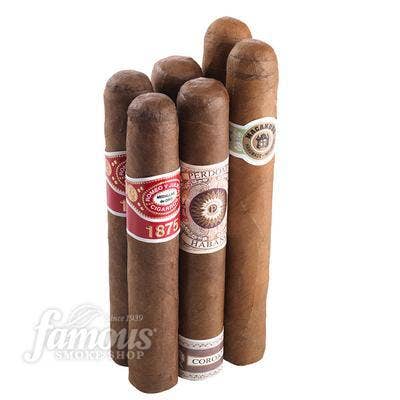
Identifying cigars by their boxes today
When it comes to box designs, today, just about anything goes. From the simple bôite nature Spanish cedar boxes used for Davidoff cigars (and many other manufacturers), to the sculpture-like boxes of Perdomo’s Edición de Silvio cigars, to the traditional “Renaissance period” style boxes like La Aroma de Cuba, to CAO’s Concert series cigars whose boxes look like mini-guitar amps, designers continue to amaze cigar smokers with their ingenuity.
In addition to the required I.D.’s and familiar country of origin seals that overlap the top and side of most cigar boxes, you may find the following on the bottom of some boxes: a label with a bar code and a sticker identifying the lot and inspector’s initials (often written by hand); imprints of the factory name & logo; serial numbers, plus the aforementioned pieces of paper with the inspector’s name, box lot, etc., and finally, the most obvious of labels, the U.S. Surgeon General’s Warning.
So, the next time you’re significant other drags you to an antique store, a yard sale, or you just happen to be in a cigar store that has some vintage cigar boxes, you’ll know what to look for. In the end, it’s just another part of the premium cigar experience.